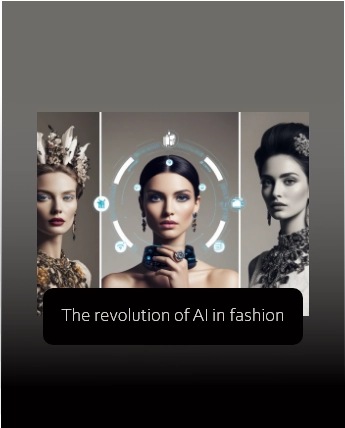
Author: Paula Sanchez – Designer
Fashion, an industry known for its creativity and constant innovation, is being radically transformed by artificial intelligence (AI). What was once a field dominated solely by artistic vision and manual skills is now being integrated with cutting-edge technology that promises to redefine the process of design, production, and consumption of fashion. From creating personalised collections to predicting global trends, AI is positioning itself as an essential tool for designers and brands looking to stay ahead in an increasingly competitive market. Let’s check the revolution of AI in fashion!
The integration of AI in fashion is not only streamlining traditional processes but also opening new creative possibilities,73% of fashion executives said Generative AI will be a priority for their businesses in 2024 (The State of Fashion ,2024). Advanced algorithms can analyse vast amounts of data to identify consumer patterns and preferences, allowing brands to anticipate market demands with unprecedented accuracy. Additionally, AI-assisted design tools are empowering designers to experiment with shapes, colours, and textures in ways that were previously impossible, pushing creativity to new heights.
In this article, we will explore how artificial intelligence is revolutionising every aspect of the fashion industry, from the supply chain to the user experience, and how it is forever changing the way we conceive and consume fashion.
Key Areas of Transformation
Artificial Intelligence (AI) is increasingly becoming a critical component in the fashion industry, driving innovation across various domains. Here, we will explore how the revolution of AI in fashion influences trend forecasting and research, virtual prototyping, designing spaces, fashion models, and trendy content creation.
1. Trend Forecasting & Research
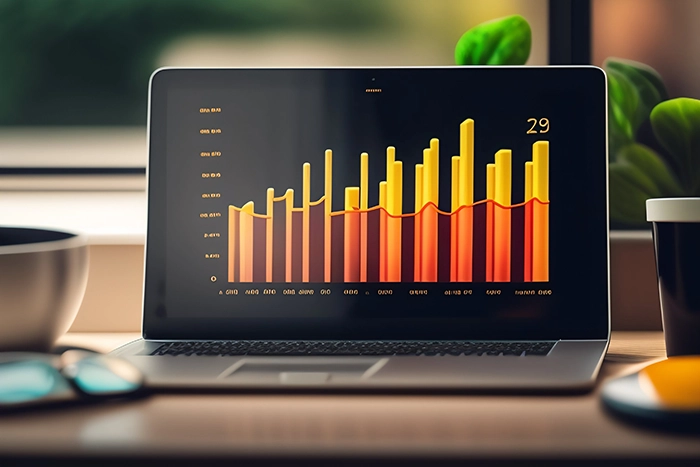
AI has revolutionised trend forecasting by enhancing the speed and accuracy with which fashion trends are identified and predicted. Traditional trend forecasting methods relied heavily on human analysis and intuition, which could be slow and subjective. Today, AI algorithms analyse vast amounts of data from social media, online searches, and sales figures to detect emerging trends in real-time. This ability allows fashion brands to respond more dynamically to shifts in consumer preferences, reducing the time it takes to bring new styles to market (AI Model Agency, 2023).
2. Virtual Prototyping

Virtual prototyping is another area where AI is making significant strides. By using AI-powered tools, designers can create and modify 3D models of garments digitally, streamlining the design process. This approach reduces the need for physical samples, leading to cost savings and more sustainable practices. AI-driven virtual prototyping tools also allow designers to experiment with different fabrics, colours, and patterns in a virtual environment, making the design process more efficient and creative (Analytics India Magazine, 2023).
3. Designing Spaces
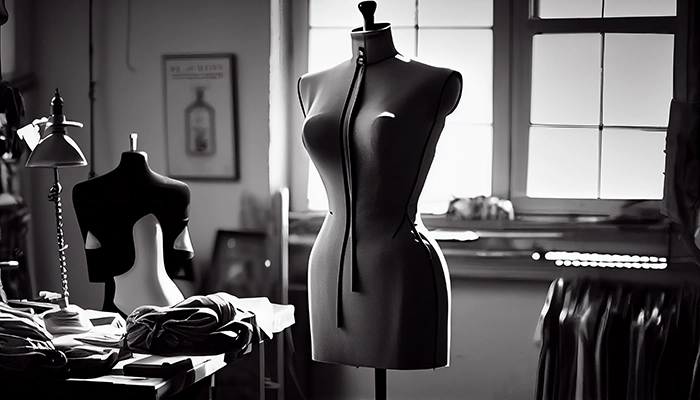
AI’s impact extends beyond garments to the very spaces where fashion is created and sold. For instance, AI can be used to design and optimise retail spaces, creating personalised shopping experiences that cater to individual preferences. AI-driven tools analyse customer behaviour, allowing retailers to adjust store layouts and product placements to maximise engagement and sales. Additionally, as the fashion industry ventures into the metaverse, AI is crucial in designing virtual stores and showrooms that offer immersive, interactive experiences (Immago, 2023).
4. Fashion Models
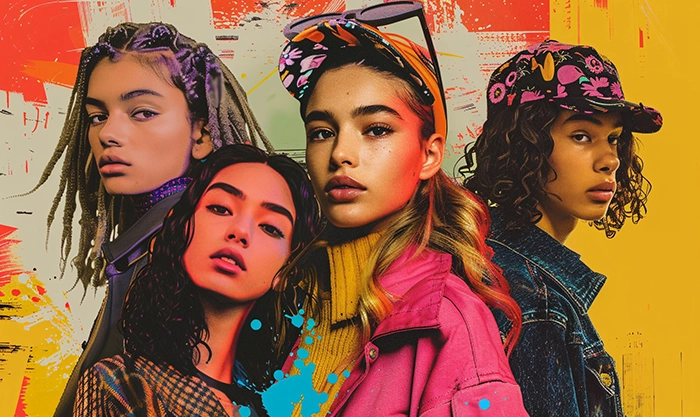
The rise of AI-generated fashion models is reshaping the way fashion is presented and marketed. Brands like Levi Strauss are collaborating with AI platforms to create hyper-realistic virtual models that reflect a diverse range of body types, ages, and ethnicities. These AI models are not just cost-effective but also allow brands to produce content around the clock, without the logistical challenges of traditional photoshoots. However, this trend also raises questions about authenticity and the representation of diversity, as the industry navigates the ethical implications of digital avatars replacing human models (AI Model Agency, 2023; Analytics India Magazine, 2023).
*Check out Aitana’s Instagram profile: a Spanish AI generated model here.
5. Trendy Content Creation
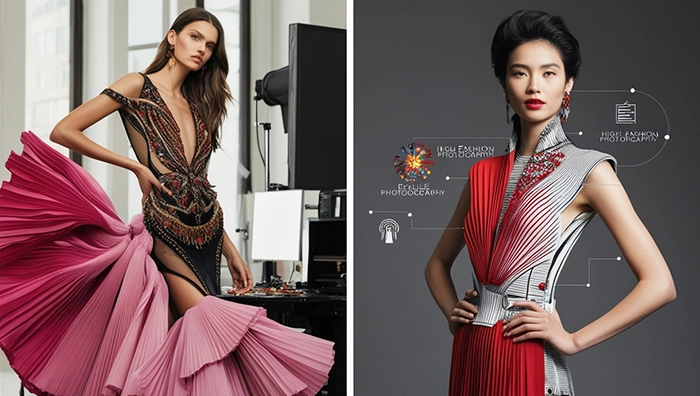
Taken from: https://vitaldesign.com/buyer-persona/
In content creation, AI is enabling fashion brands to generate tailored content at scale. Tools like Shopify Magic use AI to create personalised marketing materials, from product descriptions to social media posts. This automation helps brands maintain a constant stream of fresh, relevant content, increasing engagement with their audience. Furthermore, AI-powered chatbots and recommendation engines enhance the shopping experience by providing personalised suggestions based on individual preferences and past behaviours, thus driving sales and customer satisfaction (Analytics India Magazine, 2023; Immago, 2023).
Conclusion
AI is transforming the fashion industry in profound ways, from speeding up trend forecasting to revolutionising the design and retail spaces. While these advancements offer numerous benefits, such as increased efficiency and personalised experiences; they also present new challenges, particularly around diversity, ethics, and authenticity concerns. As the revolution of AI in fashion continues, it will be essential for the fashion industry to balance technological innovation with the need to maintain human creativity and ethical standards.
REFERENCES
– AI Model Agency. (2023). The Next Wave in Fashion: How AI-Generated Fashion Models Are Changing the Industry. Retrieved from https://www.aimodelagency.com
– Immago. (2023). How Artificial Intelligence is changing the fashion industry. Retrieved from https://www.immago.com
– Analytics India Magazine. (2023). Top 7 Noteworthy AI Innovations in Fashion in 2023. Retrieved from https://www.analyticsindiamag.com
-Balchandani,A.,Barrelet,D.,Berg,A.,D’Auria,G.,Rölkens,F.,& Starznska,E.(2023) The State of Fashion 2024: Finding pockets of growth as uncertainty reigns. En McKinsey & Company. https://www.mckinsey.com/industries/retail/our-insights/state-of-fashion

Paula Sanchez – Designer
